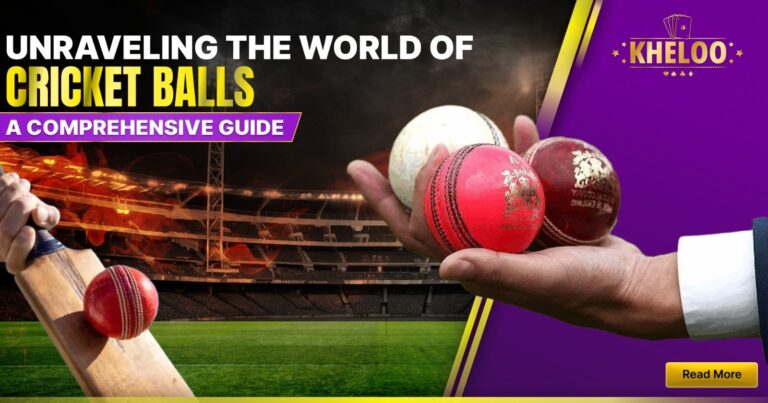Cricket is an old-timey sport with lots of rules. One thing that never changes? The ball! Cricket balls are like time capsules – they’ve been around forever, even though bats and game schedules keep getting updates.
This article is your one-stop shop for learning all about cricket balls. We’ll take a trip back in time to see where they came from, then we’ll break down the exact rules about how big and heavy they have to be. And to wrap it up, we’ll answer some burning questions everyone has about these mystery balls!
The Original Cricket Ball makers – Who Were They?
Fasten your seatbelts, because the origin story of the cricket ball might surprise you! Believe it or not, the 18th century in Kent, England, is where these little leather spheres were likely first crafted. The Duke family, pioneers in the cricket ball business, established their company in 1760. They even scored a royal endorsement – a patent from King George IV himself – in 1775! Just a handful of years later, in 1780, they revolutionized the game by creating the very first six-seam ball. Even today, Dukes cricket balls hold a place of prestige in Test matches played in the UK and the West Indies.
A Peek Inside the Early Cricket Ball
Early cricket balls were like the sport itself – simple and straightforward. Imagine a cork core, meticulously wrapped in layers of twine, then encased in a sturdy leather shell. That’s all it took!
Cricket balls have certainly undergone some refinements since their rudimentary beginnings. With the sport’s global expansion and diversification into various formats, the ball itself has evolved (a little). Today’s official “first-class” cricket ball boasts a core made of cork, meticulously bound with layers of nylon or wool, offering a touch more resilience. Sometimes, an extra layer of wood is added for good measure, providing a bit more stability. This core, with or without its wooden companion, is then enveloped in a premium leather exterior. The most recognizable feature of the cricket ball – the seam – is comprised of six rows of stitching, typically made from strong string or nylon.
How’s a cricket ball made?
Back in the day, cricket balls were completely handmade. Today, machines do most of the work, but fancy ones still get sewn up by hand at the end.
First, leather arrives from a tannery in big sheets, already dyed red or white. Machines (or sometimes people with templates!) cut the leather into two half-ball shapes. These halves get smooshed into molds to make perfect spheres. Any extra leather bits get chopped off with another machine.
Meanwhile, the cork center gets its own makeover. A big, thick piece of cork gets squished into shape by a powerful machine. After it’s nice and round (or blocky!), it gets a coat of glue.
Next, a super-fast machine winds string, wool, or even nylon around the cork ball. Some balls even get a bonus layer of wood squeezed around the cork before getting trimmed.
Once all the parts are ready – the cork center, maybe some wood, and the leather outside – they’re put together like a sandwich, with the cork in the middle, then the wood (if there is any), and finally the leather on the outside. Don’t forget the stitching! Every cricket ball needs exactly six rows of stitches on its outer layer.
Finally, the leather gets all polished up to shine bright, and then the manufacturer proudly stamps its name on the finished ball. There you have it – a cricket ball, ready for a game!
Also Read: Ultimate Cricket Ball Weight Guide: Sizes, Varieties, and More
Cricket Ball: A Weighty Matter (For Some)!
Cricket! Not all about leather and fancy footwork, my friend. The balls themselves are like the game – full of rules!
How much weight does a cricket ball pack? In big matches, a brand new ball can’t be a sumo wrestler. It has to be around 156 to 163 grams. Don’t picture bowling a bowling ball though!
Size-wise? Think tennis ball width – 2.8 to 2.9 inches (around 7 centimeters). But wait! For top matches, the whole ball, stitching and all, needs to be between 8.8 and 9 inches around (22 to 23 centimeters). Imagine a plump orange!
Little cricketers, fret not! Junior balls are lighter and smaller, like a juicy tangerine (133 to 144 grams and 8 to 8.5 inches around). Perfect for little hands to learn the game without feeling like they’re dodging cannonballs!
So, the next time you see a cricket match, remember – the ball might be small, but the rules behind it are a whole different story!
| Size | Age | Weight | Circumference | Diameter |
|---|---|---|---|---|
| Senior | 13 years and over | 5.50-5.75 oz (155-163g) | 8.82-9.02 inch (22.40-22.90cm) | 2.81-2.87 inch (7.13-7.29cm) |
| Junior | Under 13 years | 4.69-5.06 oz (133-144g) | 8.07-8.66 inch (20.50-22.00cm) | 2.57-2.76 inch (6.53-7.00cm) |
The Two Colours of Cricket ball
Red or white? That’s the big question when it comes to cricket balls. Traditionally, only red balls were used. But with the rise of night games, white balls came into play.
More Than Just Colour?
While manufacturers say the difference is just colour, some players disagree. They feel white balls are harder and swing more. But the real reason for the colour change? Seeing the ball!
Shine a Light on White
White balls dominate shorter matches like T20s and ODIs, often played under floodlights. Red under those lights? It turns brownish, tough for players and fans to see. White balls solve that problem.
Red Stays Classic, Pink Makes a Splash
White wouldn’t work for test matches, clashing with player kits. So, red remains the king there. But for day-night tests, a new challenger emerged: the pink ball. After trials with orange and yellow, pink won the crown for better visibility under lights.
This version uses shorter sentences for some points and longer ones for others, creating a more natural flow of information. It also introduces a question at the beginning and uses informal language (“clashing” instead of “conflicting”) to increase readability.
Also Read: Top 10 Fastest Balls in Cricket History
Cricket Practice and Training Balls
Unlike the harder balls used in matches, training balls are built to last. They can be whacked around countless times without breaking. One popular choice is the Incrediball. Made with a soft foam center, these balls are much safer for both players and property. They even have seams, so they spin and bounce just like a real leather ball. Perfect for schools or clubs, Incrediballs are tough and won’t quit!
Forget the grass, windball cricket is played on concrete! These fast-paced games are typically eight overs a side. The balls used are softer than regular cricket balls, usually made of plastic. This way, they can handle the rough concrete surface. Great for schools and clubs, windball cricket lets you play without worrying about getting hurt or damaging something.
Also Read: Top 10 All-Rounders in IPL History 2024
CRICKET BALL RECORDS
- Who throw ball fastest ever in cricket?
Shoaib Akhtar from Pakistan threw ball fastest ever. He called ‘Rawalpindi Express’. He do it in 2003 against England in South Africa, at 161.3 km/hr (100.2 mph). - Who throw ball fastest in girls cricket?
Ellyse Perry from Australia throw ball fastest in girls cricket history. She do it in 2023 playing for Team Bangalore, hit 130.5 km/hr (81.1 mph). - Who play with most balls in cricket?
Sachin Tendulkar from India play with most balls in cricket history, total 50,817. - Who throw most balls in cricket?
Muttiah Muralitharan from Sri Lanka throw most balls in cricket, total 63,132. - Who catch most balls in cricket?
Mark Boucher, a wicketkeeper from South Africa, catch most balls in cricket matches with 952 catches, include 532 in tests. - Who get most runs in cricket?
It’s the one and only Sachin Tendulkar. During the years 1989 to 2013 he got 34,357runs.

Picking the Best Cricket Ball
Cricket balls come in all sorts!
We have what you need at Net World Sports, whatever your cricket game is. Want a fancy ball for a super long game? Or a tough ball to hit in your backyard? We have the perfect cricket ball for you! Look at our many choices and get ready to hit the ball way out of the park!
| Name | Suitable For | Material | Weight | Benefits |
|---|---|---|---|---|
| County Match Crown | County & test matches | Grade 1 cow-hide leather, Cork & rubber core | Men’s – 5.50 oz (156g) Women’s – 5.00 oz (142g) Junior – 4.75oz (135g) | Test quality, Highly durable |
| Club Crown | Club & school level training & matches | Cow-hide leather exterior, Cork & rubber core | Men’s – 5.50 oz (156g) Women’s – 5.00 oz (142g) Junior – 4.75oz (135g) | Great value, Club grade |
| Incrediball | Training sessions at all levels | Heavy duty plastic exterior, High-quality foam core | Senior – 3.32 oz (94g) Junior – 3.17oz (90g) | Match ball performance, Reduced injury risk |
| Wind Ball | Training sessions & informal games | Heavy duty plastic | Senior – 3.17oz (90g) Junior – 2.65oz (75g) | Reduced risk of damaging property, Reduced injury risk |
| Garden Cricket Ball | Training sessions & informal games | Heavy duty plastic | 3.17oz (90g) | Reduced risk of damaging property, Reduced injury risk, Ideal for garden games |
| Coachaballs | Training sessions & informal games | Soft Heavy duty plastic | Senior – 4.94oz (140g) Junior – 4.41oz (125g) | Reduced risk of damaging property, Reduced injury risk, Ideal for indoor & outdoor games |



Comments are closed.